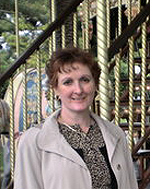|
By Sara Appel-Lennon
 SAN DIEGO--As a child, I felt renewed and cleansed of my sins each time I showered. The Jewish custom of Tashlich emphasizes renewal by encouraging Jewish people to let go of past misdeeds by symbolically tossing bread crumbs, stones, rose petals, or even pocket lint in to the water. SAN DIEGO--As a child, I felt renewed and cleansed of my sins each time I showered. The Jewish custom of Tashlich emphasizes renewal by encouraging Jewish people to let go of past misdeeds by symbolically tossing bread crumbs, stones, rose petals, or even pocket lint in to the water.
I remember going to Metropolitan Park in Cleveland, Ohio to perform Tashlich with my family. I found big rocks, which were often heavy to carry. I thought big rocks symbolized more sins. I loved hearing the big splash, and watching the rocks sink, reassured me that I was forgiven for my past transgressions.
The congregants of Temple Emanu-El toss bread crumbs not stones. I met them at Lake Murray, where we symbolically unburdened ourselves the boat docks. The old adage does not apply here. “Let he who is without sin cast the first stone.” Even though, I have sinned, I still miss my childhood days of casting stones in to the water instead of bread crumbs.
I did some reading about Tashlich, learning that in the thirteenth century, shaking of the clothes was sufficient as a gesture of repentance. Today, the idea is that throwing things into the water represents casting away of sins. Another explanation is that it is the casting away of what is no longer fitting or healthy. I prefer this interpretation.
Usually the ceremony requires going to a flowing body of water such as a stream, a lake, or an ocean. However, a faucet or a hose may also be used since everyone does not near a large body of water. Water represents life, creation, and even a place to visit God.
Go to the top of right column |
|
Some rabbis of the Middle Ages viewed Tashlich as superstitious. They worried that the Jewish people would substitute Tashlich for teshuvah by symbolically casting their sins into the water instead of reflecting upon their misdeeds and resolving to make corrections. Because of this the rabbis chose a prayer taken from Micah to be said during Tashlich.
Who is a God like unto Thee, that pardoneth the iniquity, and passeth by the transgression of the remnant of His heritage? He retaineth not His anger for ever, because He delighteth in mercy. He will again have compassion upon us; He will subdue our iniquities; and Thou wilt cast all their sins into the depths of the sea.
To explain why water was used during Tashlich, some rabbis gave an interpretation or midrash of the story of Abraham’s response to God’s command that he sacrifice Isaac. According to the midrash, Satan became a voice in Abraham’s head and told Abraham to disobey God. Satan subsequently disguised himself as a raging river. Abraham forged into the river and called out to God to save him when the water reached Abraham’s neck. God saved Abraham by calming the river
The binding ofIsaac—and God’s subsequent substitution of a ram for the boy—is known as the "Akedah" in Hebrew (Akedah means "to bind" or "the binding").. It symbolizes willingness to sacrifice even that which is most important to you for the purpose of being obedient to God This is why the Akedah is again read on Rosh Hashanah morning.
While I enjoy the annual tradition of Tashlich, I value the importance of self-reflection more often than once per year.
Although showering doesn’t hold the same meaning for me, I still value the idea of feeling cleansed of past transgressions. Performing Tashlich reminds me to take stock of my life, and let go of the past.
|

